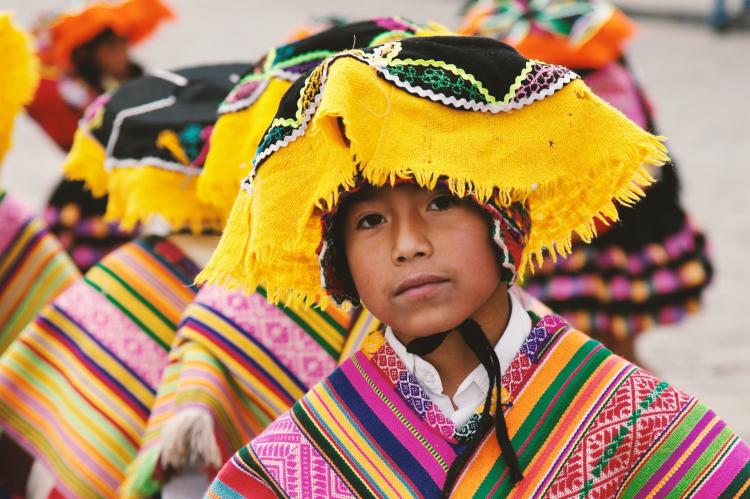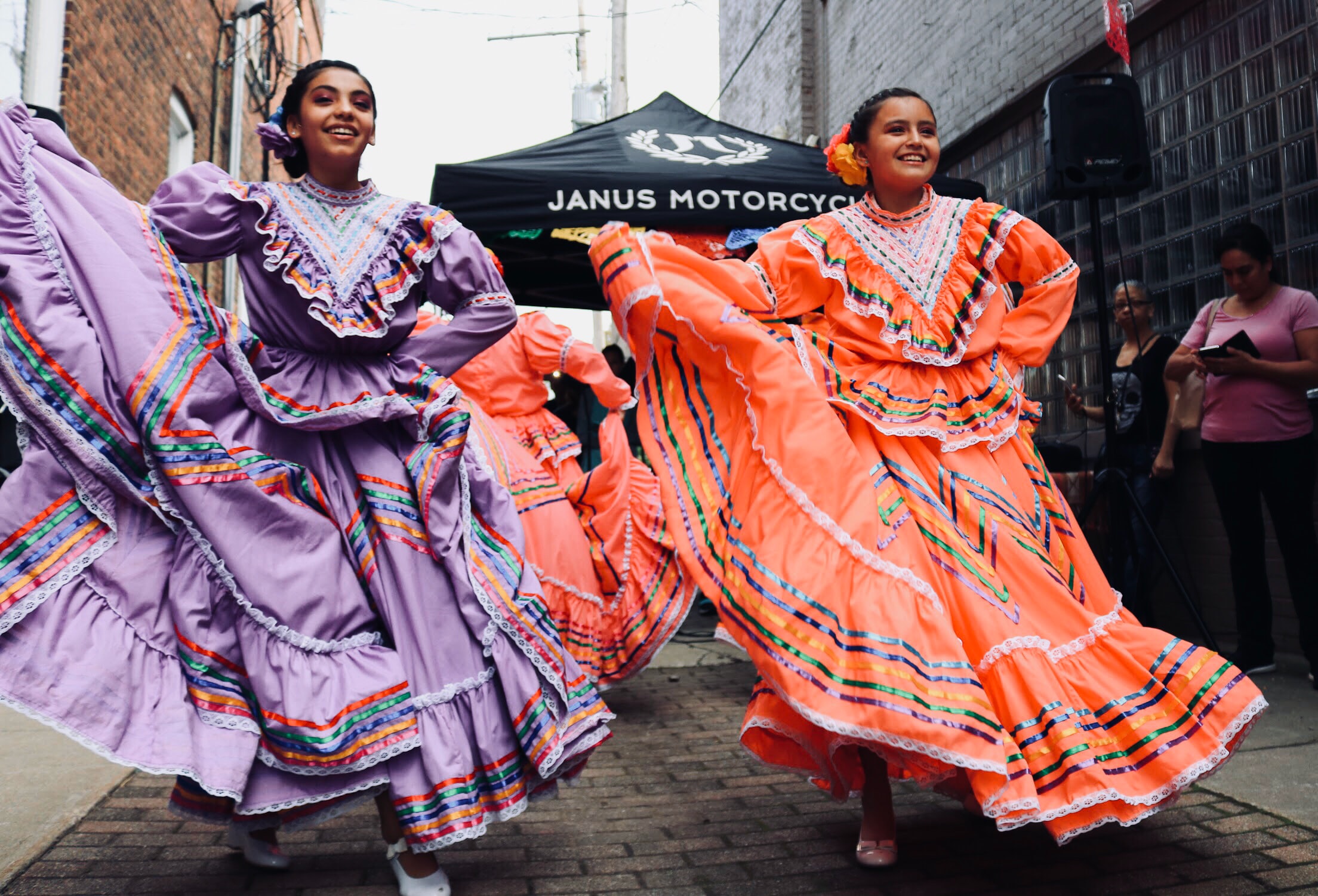AUP Students Reflect on Hispanic Heritage Month

With National Hispanic Heritage Month well underway in the U.S, many AUP students from the Hispanic community who were not in their hometown to celebrate with their families made it a point, nonetheless, to celebrate their identities while in Paris. For a community that is so vast in culture and history, their shared experiences as a result of their Hispanic heritage unify them.
"We understand each other," said AUP student Sophia Quintero. "I love my people because I know they love me."
Why the Middle of the Month?
Unlike many other cultural heritage months, National Hispanic Heritage month begins directly in the middle of the month on September 15 and, as the name suggests, ends a month later on October 15. This is no coincidence, as many Hispanic countries including El Salvador, Honduras, Nicaragua, Guatemala, and Costa Rica gained independence on September 15. Within the next few following days, many other Hispanic countries celebrate their independence. Mexico celebrates on September 16 and Chile on September 20, just to name a few.
Having realized that many of the Independence Days coincide with one another, September 15 was officially recognized as the start of Hispanic Heritage Month in 1989, even though most of these countries had achieved independence decades before this time.
Observing and Celebrating Independence in Different Hispanic Nations
As many countries gained their independence during this period, many of the Hispanic nations have their own distinct traditions to rejoice. In Chile, for example, Independence Day is a time for family and friends to gather, and make Empanadas de Pino containing olives, beef, raisins, and egg while listening to some Reggaeton music.
"Some of my best memories surround food," said Chilean-American student, Josefina Echeverría. "Food is probably the way I feel most connected to my culture," Echeverría added. As she was in Paris during Chilean Independence Day this year, Echeverría celebrated by hosting a lunch for her friends, where she prepared and served Empanadas de Pino, of course. "Being able to celebrate with my roommates and share my culture with them was really nice; it meant a lot to me," said Echeverría.
Image credit: Sukhi BorseIn Costa Rica, parades or processions are the main events. At these parades, many people bring faroles which are homemade lanterns that are decorated to illustrate patriotism for the country of Costa Rica. "It's a really unique tradition and I know a lot of people have fun making them with their loved ones," said Costa Rican native Quintero. Popular lantern decorating ideas depict the Costa Rican flag or staple crops of the nation like white maize and yams. These lanterns are then lit during the parades, creating a sea of lights.
However, not all people of the Hispanic community are celebrating Independence Day.
"I have a very tough relationship with the meaning of independence," said Puerto Rican native, Paulina Trigos. Puerto Rico, a territory with a predominantly Hispanic population, is owned by the United States, so it doesn't necessarily have the same control over its affairs as a free nation does.
"Independence for me means being in charge of our own future," said Trigos. "But while we have rights, we are still treated as second-class citizens." As a U.S. territory, Puerto Rico does appoint a governor and has its own legislation, but they do not have a say in the US electoral voting system. This is frustrating for many as the terrioty does not have a choice in deciding the leader of their parent nation.
A Diverse Population
The Hispanic community is used to encompass all cultures that are linked to the Spanish language or the Spanish culture. Globally, there are currently 20 countries and the commonwealth of Puerto Rico that adopt the Spanish culture and recognize Spanish as their national language. Yet in many cases, people tend to see them as one monolith of a people. "It's odd really; most people forget that Chile even exists," said Echeverría. "People either do not know about Chile or have very limited exposure to what it is actually like," she added.
Chile is a country where you can hike the Patagonia mountains in the morning and walk along the beach in the evening. "Chile is such an amazing country and I love to call it my homeland, but when people think of Hispanic they automatically think Mexican.. and that's it," said Echeverría. They are popularly known to own the Rapa Nui Islands, more commonly known as the Easter Islands.
Image credit: Unsplash/Livia EnomotoEach country has its own respective way of doing things and even saying things. "While we might all speak Spanish, there are so many different tongues and slang that sometimes I cannot understand anyone from a country other than Costa Rica," said Quintero. Even within the everyday language, there is diversity; a word as universal as "car" varies by country: "coche" and "carro" in Mexico, "auto" in Costa Rica, and "vagón" in parts of Argentina.
A Resilient People
"Growing up I had always heard, I have to work for everything and anything I want, " said Quintero. The political climate being what it was during former President Trump's time in office caused the attitude towards the Hispanic community to grow more hostile as illegal immigration acted as the crux of many people's fear of the immigrant. "I wish people would realize the jobs we're taking are the ones most people do not want in the first place," said Quintero.
Hispanic presence in the USA has been on the rise for the last few years, and an alarming amount of xenophobia has become the commentary on an entire community.
Image credit: Unsplash/Sydney RaeWith any cultural background come a lot of stereotypes that perpetuate an image that can be limited to a person's identity. For Hispanic communities, they are dubbed as 'illegal' or a 'fiery' group of people. In Paris, even, there is a bar called Medellin, inspired by the city in Colombia, and it is entirely Pablo Escobar-themed.
"This concept just seems so wrong to me," Trigos said. "Latinos have gone through a lot, we have survived hurricanes, dictatorships, and so much more... we are more than just drugs." While this theme may be selling, promoting this stereotype encourages an attitude of ignorance that does not allow for a genuine understanding of Hispanic culture.
A United People
While the community is diverse, many Hispanic people love each other with open arms. "Finding Hispanic people anywhere I go is always special; it's like a family away from my family," said Quintero. There are parts of Paris where the Hispanic community and culture are alive and well. "I went to a Latino food market, and it just felt wonderful to speak Spanish with them," said Echeverría. "Our network is expansive, and I love it."










